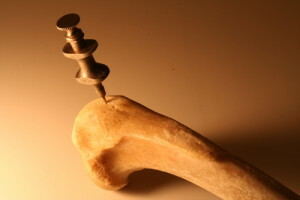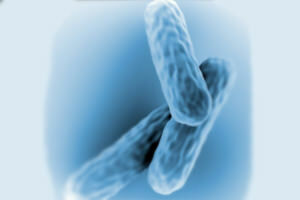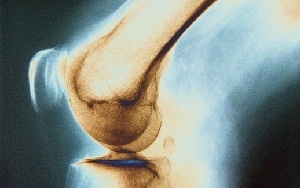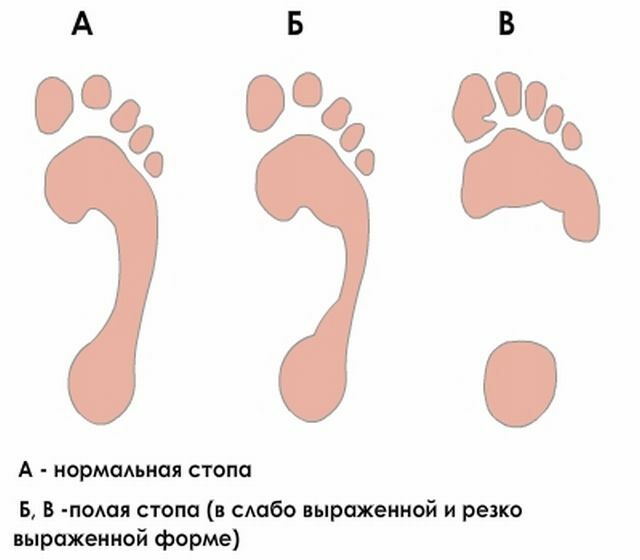 Bone and joint tuberculosis accounts for 3.4% of all cases of tuberculosis in Russia, this form is the most common among all extrapulmonary types of this disease.
Bone and joint tuberculosis accounts for 3.4% of all cases of tuberculosis in Russia, this form is the most common among all extrapulmonary types of this disease.
Most often, tuberculosis of the musculoskeletal system is localized in the spine( 40% of cases), following it according to the incidence of foci of infection - knee and hip joints( 20% each).
Content of the article
- Tuberculosis in the bone
- Causes of the disease
- Mechanism of development of joint damage
- Forms of the disease
- Clinical picture
- Diagnostic methods
- Therapeutic actions complex
- Forecast and possible consequences
- How to avoid and warn?
Tuberculosis in the bone
Bone tuberculosis is characterized by the defeat of the spongy bone with the Koch chopsticks. They destroy bone tissue and articular cartilage, leading to the formation of fistulas and abscesses.
In the absence of adequate treatment, the process of destruction of bone and cartilaginous tissue becomes irreversible and a person can become disabled.
The disease affects mainly adults, with the articular form of this disease in 100% of cases is secondary. This suggests that the spread of bacteria comes from the primary focus, lungs and bronchi, along the blood vessels and lymph in the bone tissue.
Causes of the disease
Frequent hypothermia, poor nutrition, persistent stress, prolonged contact with a person suffering from tuberculosis, poor

Koch's rod under the microscope
household conditions and working conditions - all this can cause the development of bone tuberculosis.
Sometimes this disease develops against the background of other infectious processes, as well as AIDS.
A healthy body that has a strong immune system is able to cope with a small foci of infection.
But if it is weakened or exhausted, and the immune system can not completely destroy the tubercle bacillus that has entered the body, the bacteria begin to multiply actively.
Protective forces of the body do not cope with the load, the infection spreads to the musculoskeletal system.
Injuries of the spine, joints, excessive load on the locomotor system lead to the development of the process.
Mechanism for the development of joint damage
On the bloodstream, the lymphatic system, pathogens are transferred to the bones, where they enter bone tissue and form miliary tubercles.
 This stage of the development of the disease is asymptomatic. Under the action of provoking factors, granulomas merge, and ostitis begins, accompanied by necrosis of bone tissue.
This stage of the development of the disease is asymptomatic. Under the action of provoking factors, granulomas merge, and ostitis begins, accompanied by necrosis of bone tissue.
The disease progresses, and healthy joint tissues, vertebrae are involved in the pathological process.
They are gradually deformed, necrosis captures nearby tissues, causing the formation of "stitches", a purulent abscess that produces purulent masses even after the stifling of the infectious process."Beware" can drift from the vertebra to the vertebra.
Forms of the disease
Depending on the area in which the pathological process is localized, the following forms of tuberculosis of bone tissue and joints are identified:
- defeat tubular bones - the rarest form that occurs in children, affects the phalanx of the fingers and metacarpal bones;
- tuberculosis of the spine , which is most often localized in its thoracic region;
- pathology of the bones of the foot and ankle often leads to joint fusion, loss of mobility;
- tuberculosis of wrist and bones differs bilateral bone lesion;
- tuberculosis of the shoulder ( omartrite) is a rare form that is characterized by the absence of purulent contents and prolonged course;
- tuberculosis ulnar bones ( olenitis) leads to the formation of fistulas, most often occurs in individuals younger than 20 years;
- coxit or tuberculosis of the hip joint leads to its deformation and dislocation, most common in children.

Clinical picture
Symptoms of the disease vary depending on the phase of development of tuberculosis and the degree of damage to bones and joints. There are several stages( phases of development) of the disease.
Disease development phases:
- The first phase, preartritic , is characterized by a "blurred" symptomatology. The patient can complain of fatigue, passing pains in the joints, reducing their mobility, swelling. At this stage it is difficult to diagnose tuberculosis of joints and bones, since similar symptoms are characteristic of other diseases.
- In the next phase, arthritic , the inflammation extends beyond the bone, breaks through into the joint cavity. The patient is suffering from pain, fever. The affected joint becomes edematous, increases in volume, reddening of the skin around it, thickens the skin fold. Gradually, its contours are smoothed out, and mobility decreases until a complete blockage, the muscles atrophy.
- The inflammatory process gradually subsides and the next phase begins postartritic .The patient's condition improves, the temperature and symptoms of intoxication go away, but degenerative changes in bone tissue do not pass. The focus of inflammation ceased to exist, but the residual effects persisted. The limb can become shortened, pain occurs when walking due to the destruction of the bone or joint, it is deformed, and the muscles are atrophied.
Diagnostic methods
If a tuberculosis lesion of the joints, spine is suspected, the phthisiatrician first conducts a general examination. In the course of it, he assesses the condition of the skin, gait, the presence of curvature and deformities, mobility of joints compared to each other, the presence of puffiness, muscle tone.
Palpating the affected joint, it determines how painful the tissues are when pressed, the density of the joint bag. If there are suspicions of tuberculosis, the patient is assigned additional studies.
The main diagnostic methods for determining the disease are:

The photo shows the destruction of the bones of the spine in tuberculosis
- radiograph of the lungs and affected joints ;
- MRI or CT ;
- tuberculin samples of , which are taken from the contents of a fistula or purulent abscess;
- fistulography , during which the joint is filled with a contrast agent, this procedure is performed to determine the presence of sequestrants( connective tissue sites that formed as a result of bone tissue death), fistulas.
In the X-ray image of bone tuberculosis, the darkening areas are clearly visible. The pictures also show a change in the size of the gaps between the joints, sometimes joint cartilage in the joint, thinning and banding in the bone, abscesses in the form of spots that stand out against the background of a healthy tissue.
The sequesters in the image are stains with clear edges, they stand out sharply against the healthy joint tissue.
Complex of therapeutic measures
 Treatment of patients with tuberculosis of bones and joints is complex. Anti-tuberculosis drugs such as Rifampicin, Etambutol, Kanamycin, and Levofloxacin are prescribed for a period of at least 1 year.
Treatment of patients with tuberculosis of bones and joints is complex. Anti-tuberculosis drugs such as Rifampicin, Etambutol, Kanamycin, and Levofloxacin are prescribed for a period of at least 1 year.
Usually appointed several antibiotics, which are actively fighting with microorganisms. Antibiotic therapy is the main treatment for this formidable disease. All antituberculous drugs can be divided into several groups: basic and reserve. In the case of the presence of bacteria in the body, resistant to the main drugs, drugs of the second and third series are prescribed.
In parallel with this, calcium preparations are prescribed, which strengthen the bone tissue.
If conservative methods do not manage to eliminate the focus of the disease or the destructive processes in the bone tissue have gone very far, then surgical intervention is indicated: synovectomy or removal of the affected area. After carrying out restoration operations, replacing the affected part of the joint with an artificial prosthesis.
In the treatment of this disease, glucocorticoids are also used - drugs with anti-inflammatory effect, immunostimulants. 
Much faster recovery from rejection of bad habits, proper nutrition, reduced physical activity. If the disease is in an active stage, then the patient is shown rest, the affected joint is often fixed with a plaster bandage.
Tuberculosis is treated in sanatoria located in a mountainous area. Sunbaths improve well-being, destroy bacteria. To restore muscle tone, strengthen the muscular frame shown therapeutic exercise.
Prognosis and possible consequences of
Even after the inflammatory process has subsided, the articular functions remain impaired. If the spine has been affected by the tuberculosis, the hump, scoliosis, and deformity of the thorax can form.
In general, the prognosis for patients is positive. But, despite the fact that tuberculosis of the bones does not lead to death, many patients become disabled, they all have a deteriorating quality of life.
Strongly affected by internal organs strong drugs used to destroy the stick Koch.
Complications of tuberculosis can become chronic diseases of internal organs due to the use of strong drugs, amyloidosis, abscesses in soft tissues, muscle atrophy.
How to avoid and warn?
The main prevention of tuberculosis of bones can be called the maintenance of a healthy lifestyle, balanced nutrition, the rejection of bad habits, the maximum reduction in the number of contacts with tuberculosis patients.

Special attention should be paid to strengthening immunity, due attention and personal hygiene should be given.
In case of the onset of the first symptoms of the disease, it is advisable to immediately consult a doctor and follow all his instructions for the treatment of pulmonary tuberculosis. In this case, the risk of spreading infection to the locomotor system will be minimal.
Tuberculosis of bones and joints is a serious disease that requires competent and timely treatment.


